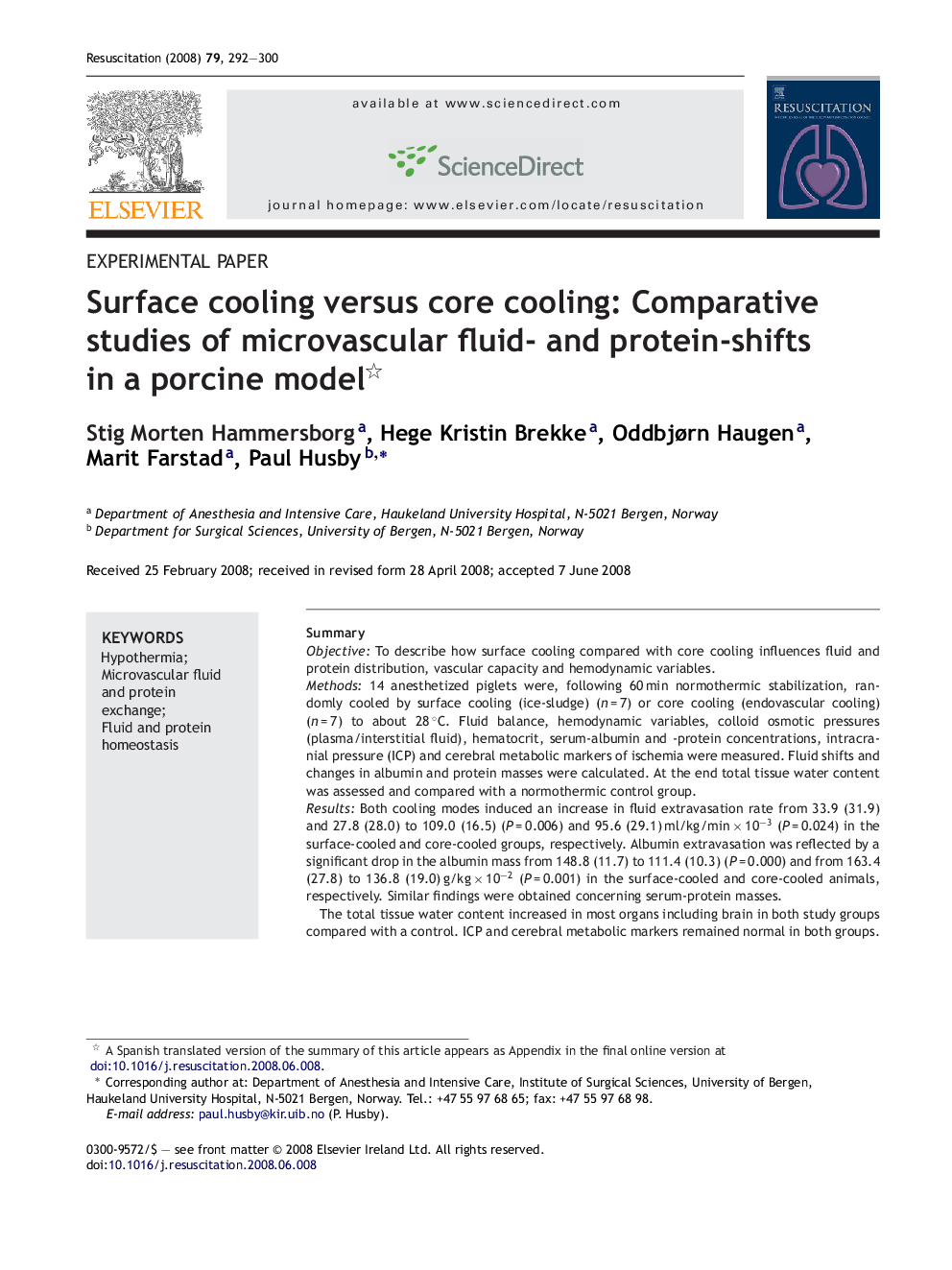| Article ID | Journal | Published Year | Pages | File Type |
|---|---|---|---|---|
| 3011310 | Resuscitation | 2008 | 9 Pages |
SummaryObjectiveTo describe how surface cooling compared with core cooling influences fluid and protein distribution, vascular capacity and hemodynamic variables.Methods14 anesthetized piglets were, following 60 min normothermic stabilization, randomly cooled by surface cooling (ice-sludge) (n = 7) or core cooling (endovascular cooling) (n = 7) to about 28 °C. Fluid balance, hemodynamic variables, colloid osmotic pressures (plasma/interstitial fluid), hematocrit, serum-albumin and -protein concentrations, intracranial pressure (ICP) and cerebral metabolic markers of ischemia were measured. Fluid shifts and changes in albumin and protein masses were calculated. At the end total tissue water content was assessed and compared with a normothermic control group.ResultsBoth cooling modes induced an increase in fluid extravasation rate from 33.9 (31.9) and 27.8 (28.0) to 109.0 (16.5) (P = 0.006) and 95.6 (29.1) ml/kg/min × 10−3 (P = 0.024) in the surface-cooled and core-cooled groups, respectively. Albumin extravasation was reflected by a significant drop in the albumin mass from 148.8 (11.7) to 111.4 (10.3) (P = 0.000) and from 163.4 (27.8) to 136.8 (19.0) g/kg × 10−2 (P = 0.001) in the surface-cooled and core-cooled animals, respectively. Similar findings were obtained concerning serum-protein masses.The total tissue water content increased in most organs including brain in both study groups compared with a control. ICP and cerebral metabolic markers remained normal in both groups.ConclusionRapid lowering of body core temperature results in extravasation of water and proteins. The amount of extravated fluid and proteins is similar either cooling is a result of surface cooling or core cooling. Cold-induced fluid extravasation is associated with edema in most tissues including brain.
